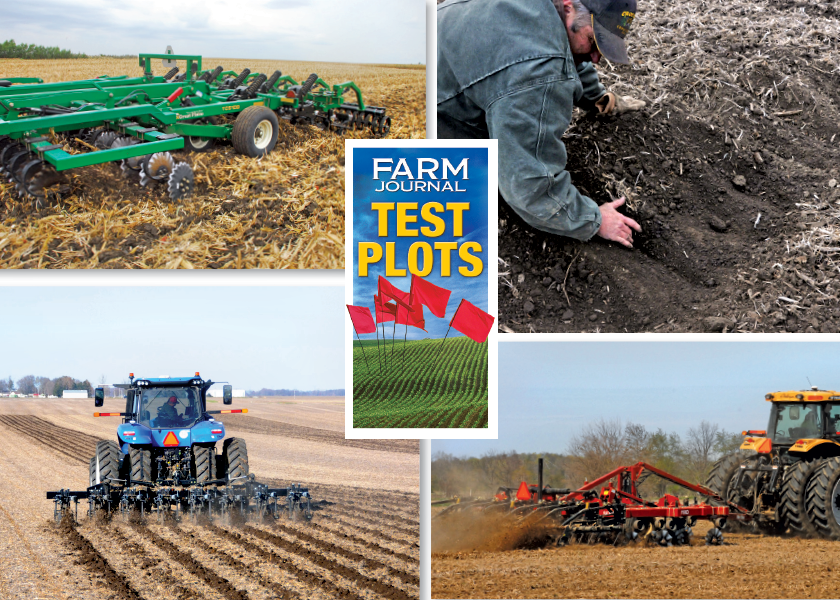4 Stories to Learn More About a Vertical Tillage System

All signs point to incentives for farmers to reduce tillage and grow cover crops. Some farmers will factor these incentives into their profit/loss statements, which will be a game changer. Through the Inflation Reduction Act, there might even be situations where farmers will find they can net more profit by complying with government carbon incentives versus maximizing yield.
Vertical tillage is not a single tool or a single pass — it is a comprehensive system, says Ken Ferrie. Through the Farm Journal Test Plot program and Ferrie’s experience in hundreds of clients fields, the following stories will provide the foundation you need to understand a vertical tillage system and the important first step of removing horizontal layers.
1. Considering Vertical Tillage? Here Are 5 Benefits
The concept of vertical tillage is well-known, but what it entails isn’t fully understood in some corners of farm country. In simple terms, Ken Ferrie says a true vertical tillage system involves understanding the soil profile, addressing compaction issues, ensuring that each pass achieves the goal of the system, respecting residue cover and providing a well-prepared seedbed for the planter pass. Simply put, a vertical system means managing the entire soil profile for uniformity.
2. Now's the Time to Transition to a Vertical Farming System
For decades, moldboard plows, disks and field cultivators, all horizontal tillage tools, have been the go-tos for fieldwork. That’s changing as fears about climate change come into focus. There are various vertical tillage systems — conventional vertical tillage, one-pass-and-plant vertical tillage, no-till and strip-till. How do you decide which tillage system fits your operation and temperament?
3. Do You Have Soil Compaction and Density Changes That Impede Roots and Water? Here’s How to Find Out
Identifying horizontal layers is a crucial first step when converting to vertical tillage. There is lots of Farm Journal Test Plot data to explain why it’s so important. Reduced tillage and covers require a vertical system, from which compacted soil layers and sudden density changes have been removed. On-farm tests confirm removing compaction and density layers before transitioning to a vertical system can add 15 bu. to 20 bu. per acre and might lower cost of production.
4. Shatter Your Yield Barriers One Layer At A Time
So — you have probed or dug and found the layers put in place by horizontal farming tools. What’s next? “Now it’s time to find the best way to remove them,” says Ken Ferrie. Focus on depth, shatter, spacing and horsepower — and avoid recreational tillage at all costs. A combination of strip-till and cover crops might help remove layers on highly erodible land where you are not allowed to till.







